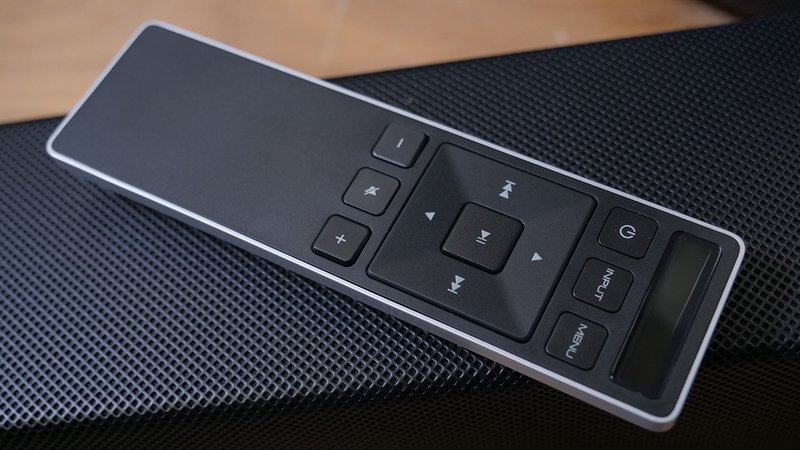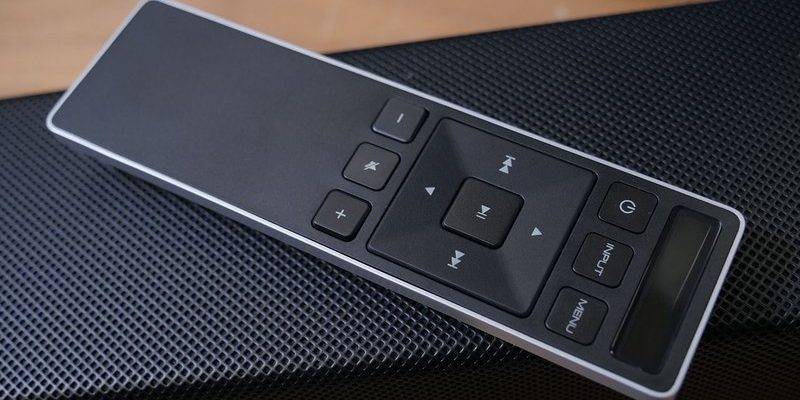
Pairing your Samsung soundbar remote to your TV isn’t rocket science, but if you’ve never done it, things can seem a little intimidating. Maybe you’ve fiddled with similar stuff before—like connecting Bluetooth headphones or setting up a universal remote—but every device seems to have its own quirks. The Samsung soundbar remote is a bit of a control freak. It wants to manage your audio and, if you let it, your TV too. That’s why I’m here: to break it down, step by step, with zero confusion and plenty of real-world help, so you’ll only need one remote, not three.
What You Need: A Quick Check Before You Start
Before you start pressing buttons like you’re trying to crack a safe, make sure you’ve got all your ducks in a row. You’ll need your Samsung soundbar remote (the one that came in the box with your soundbar), your TV (most work with Samsung, but some other brands are compatible, too), and—this might sound obvious—batteries that aren’t half dead. You’d be shocked how many pairing problems actually come down to a weak battery. Want to avoid an hour of frustration? Just swap in a fresh set first.
Here’s the thing: There are a couple of types of Samsung soundbar remotes floating around out there. Some are slim and stylish with just a handful of buttons, while others look beefier, like they can launch a spaceship. The process is similar for both, but where the buttons are (or what they’re labeled) might throw you for a loop. If you’re not sure which remote you have, just flip it over—Samsung usually prints a model number somewhere on the back.
You’ll also want to check how your soundbar is connected to the TV. HDMI ARC is the gold standard, but some people use optical cables or even Bluetooth. The setup varies a little depending on this, so it’s worth knowing from the get-go.
Tip: If you’re staring at a tangle of cables behind your TV and you have no idea what’s what, snap a pic with your phone. Reference it as you go—trust me, your future self will thank you.
Programming Your Samsung Soundbar Remote: The Step-By-Step Playbook
Alright, here’s the juicy part—actually syncing your Samsung soundbar remote to your TV. It feels a teeny bit like teaching your devices to speak the same language. The good news? They’re both eager students. The most common way is through *Auto Power Sync*, which is a Samsung thing that lets your soundbar and TV communicate like BFFs. No secret codes or Morse code tapping needed.
- Step 1: Make sure both your soundbar and TV are powered on.
- Step 2: Connect the soundbar to your TV. HDMI ARC (Audio Return Channel) is best. Plug the HDMI cable into the port labeled “HDMI ARC” on both devices.
- Step 3: Set your soundbar’s source to “D.IN” (Digital In) if using HDMI ARC, or the correct setting for your cable.
- Step 4: On your soundbar remote, find the “Source” button—usually a rectangle with an arrow. Press until you land on the right input.
- Step 5: Now, on some Samsung soundbar remotes, you’ll see a “TV Power” button. Hold it for about 5 seconds. This triggers the remote’s pairing mode.
You might see your soundbar’s display flash something like “ON-TV REMOTE” or hear a beep. That’s your cue that things are working! If the TV volume now changes when you use the soundbar remote, you’re in business.
If not? Don’t freak out just yet. Sometimes, you’ve got to dive into your TV’s settings to find “Anynet+ (HDMI-CEC)”—this magical setting lets the TV and soundbar chat through the HDMI cable. Make sure that’s turned on. Will you have to dig through some menus? Probably. But once it’s set, you’re golden.
Common Problems And Their Fixes: Troubleshooting Like A Pro
Let’s be real, sometimes things just don’t work the first time. You press buttons, wait for magic, and… nothing. Super annoying, right? But troubleshooting doesn’t have to make you want to throw the remote out the window. Most issues are surprisingly simple to fix if you know what to look for.
First, double-check your cables. Make sure everything’s plugged in snugly. Cables can loosen up if someone kicks them (or if a pet thinks it’s a toy). Next, check if your soundbar is set to the right source. It sounds basic, but I’ve lost count of how many times I’ve been yelling at my TV, only to realize I’m on the wrong input.
Batteries: This one’s sneaky. Weak batteries can make your remote act weird, like responding only half the time or not pairing at all. If in doubt, pop in a new set. Consider it a cheap insurance policy against tech headaches.
If you still can’t get the remote to work with your TV, try resetting the soundbar remote. On most Samsung remotes, you can do this by holding down the “Play/Pause” and “Power” buttons for about 10 seconds until the LED blinks. This clears any old codes or stuck settings.
Pairing With Non-Samsung TVs: When Things Get Tricky
If your TV isn’t a Samsung, you’re not out of luck—just in need of a few extra steps. Honestly, compatibility is pretty good these days. But you might need to hunt down a code (yes, like the old-school universal remotes your parents used) to sync everything up.
Most Samsung soundbar remotes can be programmed for other brands by entering a code. This code tells your soundbar remote how to speak to your TV. Usually, you’ll find these codes in the soundbar’s manual or on Samsung’s support website. The process is kind of like a cheat code from a video game. On your remote, hold down the “TV Power” button and enter the code when prompted. If you get a blink or beep, you’re set.
If your TV doesn’t play nice with codes, there’s always the universal remote option. These remotes are like the jack-of-all-trades, able to work with dozens of brands and devices. Personally, I like sticking with the manufacturer’s remote when possible—it just feels less clunky.
Pro Tip: Sometimes, HDMI-CEC doesn’t work with all brands. If that’s the case, the optical cable (TOSLINK) route can also let you control volume—but power functions might still need the TV’s original remote.
What To Do If Pairing Fails: Reset and Try Again
After a couple of tries, you might start feeling like your soundbar and TV are just stubborn. Don’t take it personally. It could be a simple settings reset that’ll do the trick. I call this the “tech time-out”—sometimes even gadgets need a quick restart to get along.
Unplug both your TV and soundbar from the wall for about 30 seconds. This “hard reset” can clear up random glitches you never even see. After you plug them back in, repeat the pairing steps one more time. It feels old-school, but it’s saved me more times than I can count.
If you’ve tried everything and you’re still stuck, check for firmware updates on both your soundbar and TV. Samsung rolls out updates that can magically fix bugs or add features. Usually, you’ll find this option in each device’s settings menu under “Support” or “Software Update.” Connect them to WiFi and follow the prompts.
If you reach the end of your rope, don’t beat yourself up. Modern gadgets can be fussy. Sometimes, calling Samsung support is the fastest way to a solution—and their techs have heard it all before.
Why Bother? The Perks of a Single Remote
Let’s be honest: life’s just easier with fewer remotes. No more panicked searches when your favorite show is about to start. No need to play “which remote does what?” with every family member. One click, and everything just *works*.
A single remote isn’t just about laziness (though there’s no shame in that). It cuts down battery waste, reduces clutter, and just feels modern. If you’ve ever watched your parents juggle three remotes and mutter under their breath, you know exactly what I mean.
Plus, there’s something deeply satisfying about pressing a single button and watching your TV and soundbar power up in sync. It’s like teaching your smart home a new trick. And sure, it only saves you 30 seconds a day, but that adds up—call it “micro-joy.”
Alternatives: Universal Remotes And Smart Controls
Maybe your Samsung soundbar remote just won’t play nice, or maybe you’ve got more devices than a Samsung remote can handle. Enter the universal remote—a gadget nerd’s dream. These remotes can control everything: TV, soundbar, Blu-ray, streaming box, you name it. Some even have screens or touchscreen controls, which, while fancy, can become another learning curve.
Smartphones and tablets can serve as remotes, too, thanks to apps like Samsung SmartThings or third-party options. If you love whipping out your phone for everything (guilty), it’s actually convenient. Just remember: if your phone runs out of battery, you’re back to—well, you guessed it—using an actual remote.
If you’ve got an Alexa or Google Home, some soundbars respond to voice commands. I’ve tried it myself; it feels like living in the future, but there’s still nothing quite as reassuring as a trusty clicker in your hand.
Keeping Your Setup Running Smoothly
Once your Samsung soundbar remote is programmed to your TV, you probably won’t have to mess with it much. But—just like with any tech—things can drift out of sync. Maybe a power surge, maybe a firmware update, or just plain gremlins. Knowing how to reset, re-pair, or check your connections is just good digital hygiene.
Every couple of months, dust off your remotes and check the batteries. If you suddenly hear no sound or the remote feels laggy, look for updates or try a quick reset. It’s simple housekeeping, but it saves you from those “why isn’t this working?!” moments.
I’ve gotten into the habit of labeling my cords and jotting down my remote codes on a sticky note, tucked right in the TV stand. Not glamorous, but hey, it’s saved my sanity more times than I can count.
Wrapping Up: Turning Tech Stress Into Tech Success
So, that’s the whole journey—from random remotes and confusion to one smooth, programmed Samsung soundbar remote controlling your TV like a champ. Honestly, it takes a little patience the first time. But once you see everything working together, you’ll wonder why you ever put up with juggling all those remotes.
If you hit a snag, take a breather, double-check your steps, and try again. Most problems have simple fixes, whether it’s swapping batteries, checking settings, or giving every gadget a quick reset. And remember: technology is supposed to make life easier, not harder. Don’t let a stubborn remote steal your movie night or jam session.
Next time your friends complain about remote overload, you’ll be the hero with all the answers. Or at least, you’ll be enjoying your favorite show with zero remote-related drama. Cheers to that!
